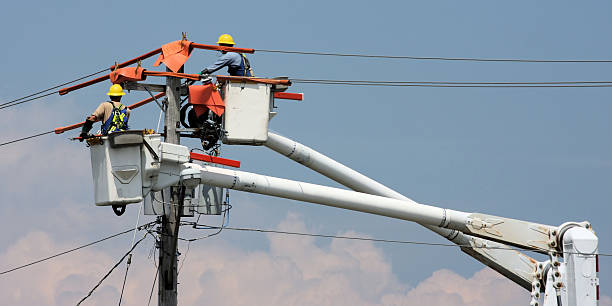

Your home's electrical system is often out of sight and out of mind—until something goes wrong. Whether it's a flickering light, a burning smell, or a tripped breaker, small warning signs can point to much larger issues. Knowing when to call in a professional can make the difference between a simple fix and a costly, potentially dangerous situation. If you live in the area and have concerns about your home's electrical setup, understanding the signs can help you determine if it's time for Electric Repairs in Kennedale TX.
Circuit breakers are designed to protect your home by shutting off the electrical supply when a circuit becomes overloaded. However, if your breaker trips frequently, it's not just a nuisance—it's a warning sign. It could mean that too many appliances are drawing power from a single circuit or that there's a more serious underlying electrical issue. In either case, it's best to have a qualified electrician assess your home's electrical panel and wiring to prevent potential hazards.
It might seem like a minor annoyance, but flickering or dimming lights often indicate poor connections or overloaded circuits. This can be especially noticeable when large appliances such as air conditioners or refrigerators kick on. If your lights change intensity often, this inconsistency might be pointing to failing wiring and panel services or even a deteriorating electrical infrastructure. An inspection from a professional can help pinpoint and correct the issue.
A home's electrical system should operate silently and without any noticeable odors. If you hear buzzing sounds coming from switches, outlets, or your breaker panel, it could be a sign of loose wiring or faulty connections. Similarly, a burning smell—especially near outlets or the fuse box—should never be ignored. These are urgent warning signs that suggest your home may require immediate electric repairs to prevent electrical fires.
Another visible sign that something is wrong with your electrical system is discolored or scorched outlets. Brown or black marks around outlets and switches may indicate that they are overheating due to faulty wiring. Continued use of these outlets is dangerous and can cause electrical shocks or fires. Replacing them without addressing the underlying cause can lead to recurring issues, which is why electrical services should be consulted.
It's not normal for outlets, switches, or surrounding wall plates to feel warm to the touch. If they do, this could indicate an internal wiring issue or that the device is overloaded. In some cases, you might even notice the wall plates vibrating. These unusual signs are often dismissed until a more serious problem arises. Calling a local expert for Wiring and Panel Services in Kennedale TX can help identify the cause and correct it before further damage occurs.
Homes built several decades ago often have outdated electrical systems that are not designed to handle today's technology and energy demands. Knob-and-tube wiring, aluminum wiring, and fuse-based systems are just a few examples of older methods that no longer meet modern safety standards. If your home hasn't had an electrical upgrade in the last 20-30 years, you may need comprehensive wiring and panel services to ensure your system is safe and code-compliant.
While using an extension cord occasionally is harmless, relying on them consistently is a sign that your home doesn't have enough outlets or circuits to meet your needs. Overloaded extension cords are one of the most common causes of electrical fires. Instead of running cords across rooms or behind furniture, consider hiring an electrician to install additional outlets or upgrade your home's circuit capacity to handle the load safely.
Feeling a slight shock or tingling sensation when touching appliances or switches isn't just surprising—it's dangerous. This could indicate grounding problems or wiring issues that pose a serious safety risk. It's especially critical to have this checked immediately in wet areas like bathrooms or kitchens, where water increases the risk of electric shock. Seeking professional electrical services ensures your home is properly grounded and protected.
If lights dim in one room when appliances are used in another, or if specific rooms lose power entirely, it could be a sign of faulty connections or problems in your service panel. These types of inconsistencies suggest that your system may be overloaded or deteriorating. In either case, professional electric repairs can restore functionality and balance across your home's circuits.
If you're planning a renovation, adding new appliances, or building an addition to your home, it's essential to evaluate your electrical system's capacity. Many homeowners overlook the need for upgraded panels or additional circuits during remodels. Consulting a professional for wiring and panel services before starting your project ensures that your new space is powered efficiently and safely.
Your home's electrical system should always operate smoothly and safely. When warning signs like flickering lights, tripped breakers, or burning smells begin to appear, they shouldn't be ignored. Taking quick action to address these symptoms not only prevents damage to your home but also protects you and your family from potential harm. If you're experiencing any of these problems, seeking